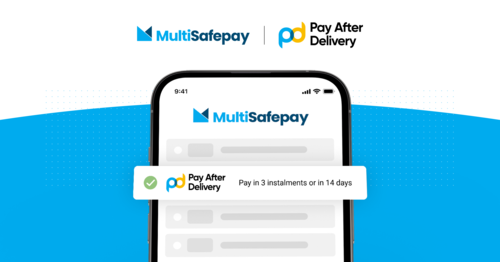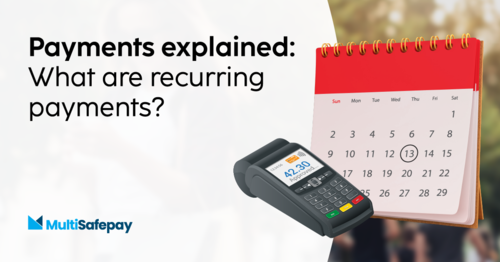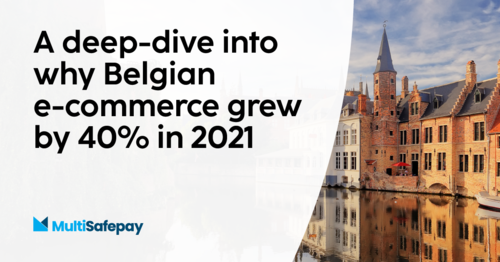Change is afoot in the payments industry. While the European economy made a strong recovery in the second half of 2021, in 2022, e-commerce businesses will need to invest in sustainable new digital ecosystems to be in a better position to grow beyond the pandemic. Payments will be a central driver for new business models and operational strategies. We sat down with MultiSafepay’s Chief Product Officer, Michiel van Werkhoven, and Deputy CEO Pieter Stal to discuss factors that will influence consumers and businesses in 2022 and how to incorporate fintech into the picture.
We’ve seen an enormous influx of new capital which creates additional fuel for early-stage companies to build new business models and solutions that support the ongoing growth in e-commerce. Last year, we saw some of those technologies take off, prompted by the pandemic. And we’ve continued seeing this happen, although it’s slowing down a bit in 2022. A lot of new capital is driving or supporting new products and solutions,”
Pieter Stal
Buy now pay later
“Buy now pay later (BNPL) has grown significantly in 2021 and will continue to do so in 2022. BNPL has a strong trust and cash flow component,” says Michiel. The rise of BNPL has triggered fintech companies to adopt a more holistic view of consumer habits, increasing investments to create a smooth checkout process. Millennials and Gen Z. have widely adopted the payment method.
“BNPL has seen a massive rise in the last couple of years among consumers, and therefore also among merchants. It’s a truly consumer-focused product offering where the moment of purchase and the actual payment is separated which is very distinct from, for example, IDEAL transactions as we see them in the Netherlands,” says Michiel.
In early 2021, CBInsights projected spending through BNPL could likely exceed 1 trillion euros globally by 2025. This trend is mainly due to online businesses eager to capture greater shares of all online sales and the target consumer enjoying interest-free deferred payments. According to CBInsights, top BNPL players have also reported significant increases in total merchant sales.
Brands and financial institutions have also started developing and delivering their own BNPL solutions. These developments have created a need for customized BNPL services designed for the brand and bank specifications. Payment service providers like MultiSafepay can help power BNPL offerings across Europe, and in this case, brand the BNPL product to the platform’s specific desires.
“Few payment service providers develop their own BNPL methods. While using third-party BNPL products has its benefits, at MultiSafepay, we build our own and get many more insights into our products which lets us strengthen relationships with the consumer. An added benefit is that we keep consumers on the merchants’ websites and tailor the service to the shop’s needs,” says Michiel.
You'll find more information on Buy Now, Pay Later here.
Omnichannel
Omnichannel payments accelerated throughout the COVID-19 pandemic with the increased merging of online payments and physical retail locations. Changing consumer habits such as shoppers paying online but picking up products and services in-person have led to new payment models that combine in-store and online. Succeeding in this new environment requires businesses to adopt a single source of payments data to provide insights into customer behavior.
In 2022, merchants will need a single integration where all the payment methods, money flows, settlements, and reconciliation data are presented in one endpoint. The consumer is also expecting a 360-picture of their customer experience; whether they made a purchase online or offline, they expect to interact with the brand regardless of the purchase origin. For MultiSafepay, this omnichannel view is key in the success of brands and their consumer experience,”
Michiel van Werkhoven
Regulatory workload
According to Pieter Stal, in 2022, the many new payment solutions and regulatory pressures present an opportunity for retailers and marketplaces to revise their financial operations. With the pandemic fueling new business models and cashless payments, the two main administrative areas of focus for businesses will be their financial license and cybersecurity.
“Currently, there is an uptick of European regulators looking into financial licenses. One type of business that relies on hassle-free transactions is the evermore popular marketplace model. However, to process their money flow and pay their sellers or users, a marketplace needs to be a financial institution,” says Michiel.
“To be in the money flow, you need to be a financial institution. Many marketplaces in money flow currently distribute funds themselves through their marketplaces, without that financial license. This presents an enormous risk in terms of KYC (Know Your Client) and AML (Anti Money Laundering),” says Michiel.
“European regulators carry the responsibility for protecting the public from money-laundering and terrorist-financing activities. They do this by implementing customer due diligence and AML legislation and guidelines, requiring payment companies to implement effective risk & compliance control and monitor policies and procedures. Businesses implementing PSD2 will need to think about transforming their data infrastructure and governance to keep consumers safe,” says Pieter.
Payment service providers are here to help take the burden of some of this complexity, so online retailers and marketplaces can do business safely. “MultiSafepay has an onboarding API that addresses this complexity. On the one hand, we can do the money flow with payments. On the other hand, we can help take care of compliance with the marketplace merchants and sub-merchants,” says Pieter.
How can you set up your team for success?
The pandemic has fast-tracked online business and in-person retail developments, making technology ever more strategic yet also more complex. Hiring the right people that understand these changes is paramount to evolving the right payment mix for your business. Below is a list of questions to consider when looking to hire the right payments service provider.
Is it a reliable, experienced, technology-driven payment services provider?
Are their reporting methods in line with your current requirements and those forecasted in the next couple of years?
Do they have local representation across Europe that can help you simplify the payment processor that can operate for you?
What upcoming payment methods and new reporting will you need in the future? Will you be prepared for the new wallets coming online?
Is your partner equipped to simplify your payments mix with a single-platform solution?
How prepared is your partner to help you with the myriad BNPL and consumer financing solutions?



